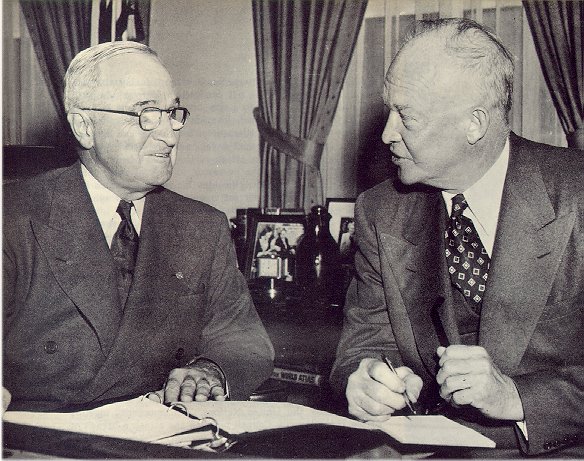U.N. fights aggression in Korea
It was Asia, however, that dominated America's international concerns during the final years of President Truman's term of office. On June 25, 1950, the communist North Korean army, trained and equipped by Russian occupation forces, crossed the 38th parallel and attacked the Republic of Korea, the government of which had been chosen in a free election supervised by the United Nations. An emergency meeting of the U.N. Security Council branded the attack a breach of the peace and demanded that the invaders withdraw at once. Two days later the Council termed North Korea an "aggressor" and called upon U.N. members to furnish all possible assistance to South Korea. The United States, which had liberated Korea from Japanese rule and felt a special responsibility for the beleaguered republic, quickly dispatched air and ground forces to Korea. They were followed by soldiers from 15 other nations and material aid from 49 countries. A United Nations Command was established and for the first time in history an organized international force was at work fighting aggression. These U.N. actions were possible, however, only because the Soviet Union had for some time been boycotting Security Council meetings and was not present to halt proceedings by using its veto.

The course of the Korean War was bitter, bloody, and frustrating. After initial setbacks, the U.N. forces gradually took the offensive and drove the invaders back. The end of the fighting seemed near until Communist China hurled hundreds of thousands of so-called "volunteer" forces into action against the U.N. troops. This intervention threatened to extend the conflict beyond the borders of Korea, but the U.N. Command-unwilling to risk sparking a far greater conflagration-settled upon a limited war for limited objectives. In time, the aggressors were driven back to a line roughly corresponding to the 38th parallel. After long negotiations, a truce arranged in the summer of 1953 recognized the facts of the battlefield. By the war's end the United States had sent a quarter of a million men half way around the world and had left more than 30,000 dead American soldiers as testimony of its determination to protect independent nations against communist aggression.
The American people in November 1952, voted into office a Republican president, breaking the Democratic Party's 20 year hold on the presidency. General Dwight D. Eisenhower decisively defeated the Democratic candidate, Governor Adlai E. Stevenson of Illinois. But while President Eisenhower was reelected in 1956 by an even larger majority, he had to work with a Congress which returned to Democratic control during his last six years in office.
